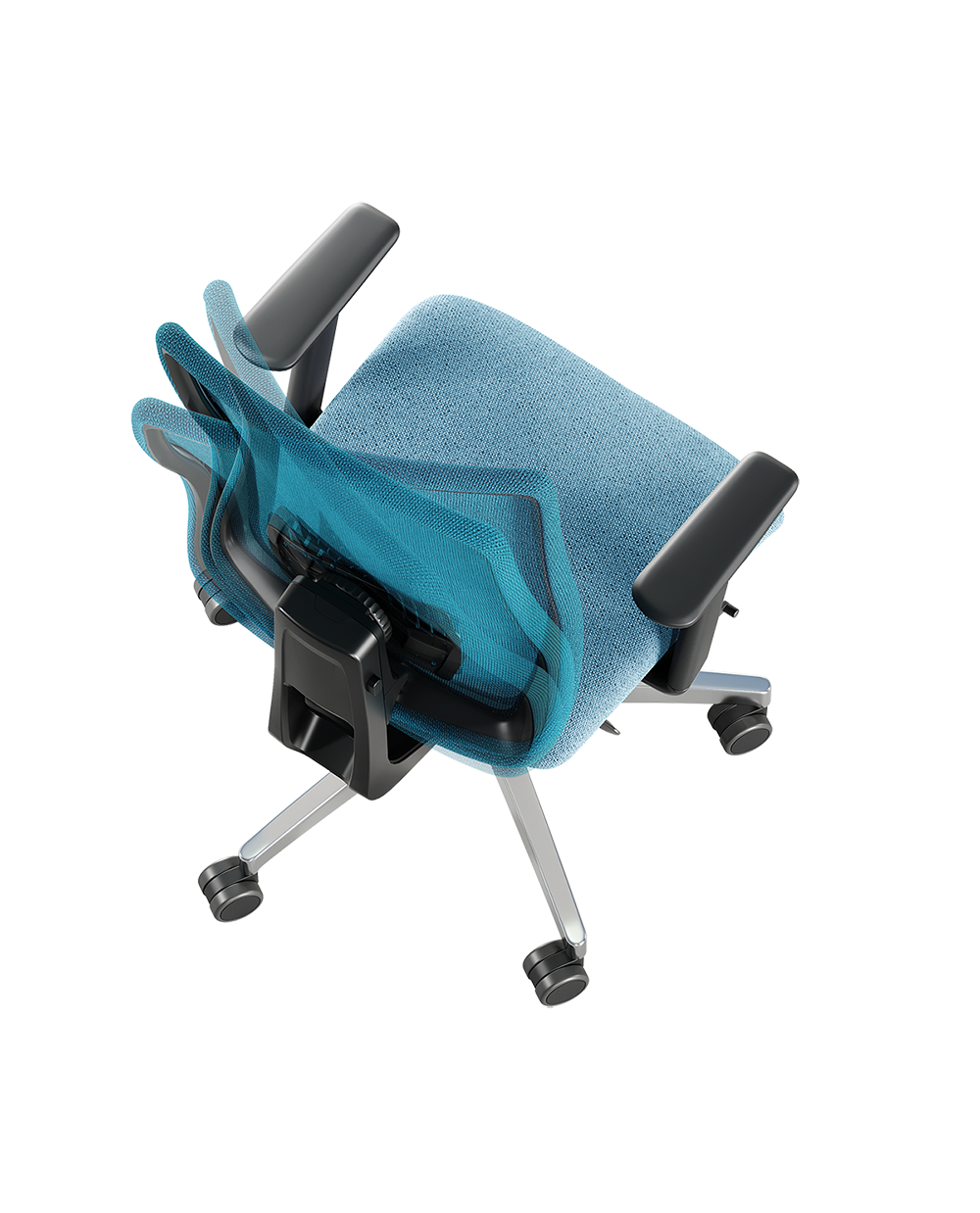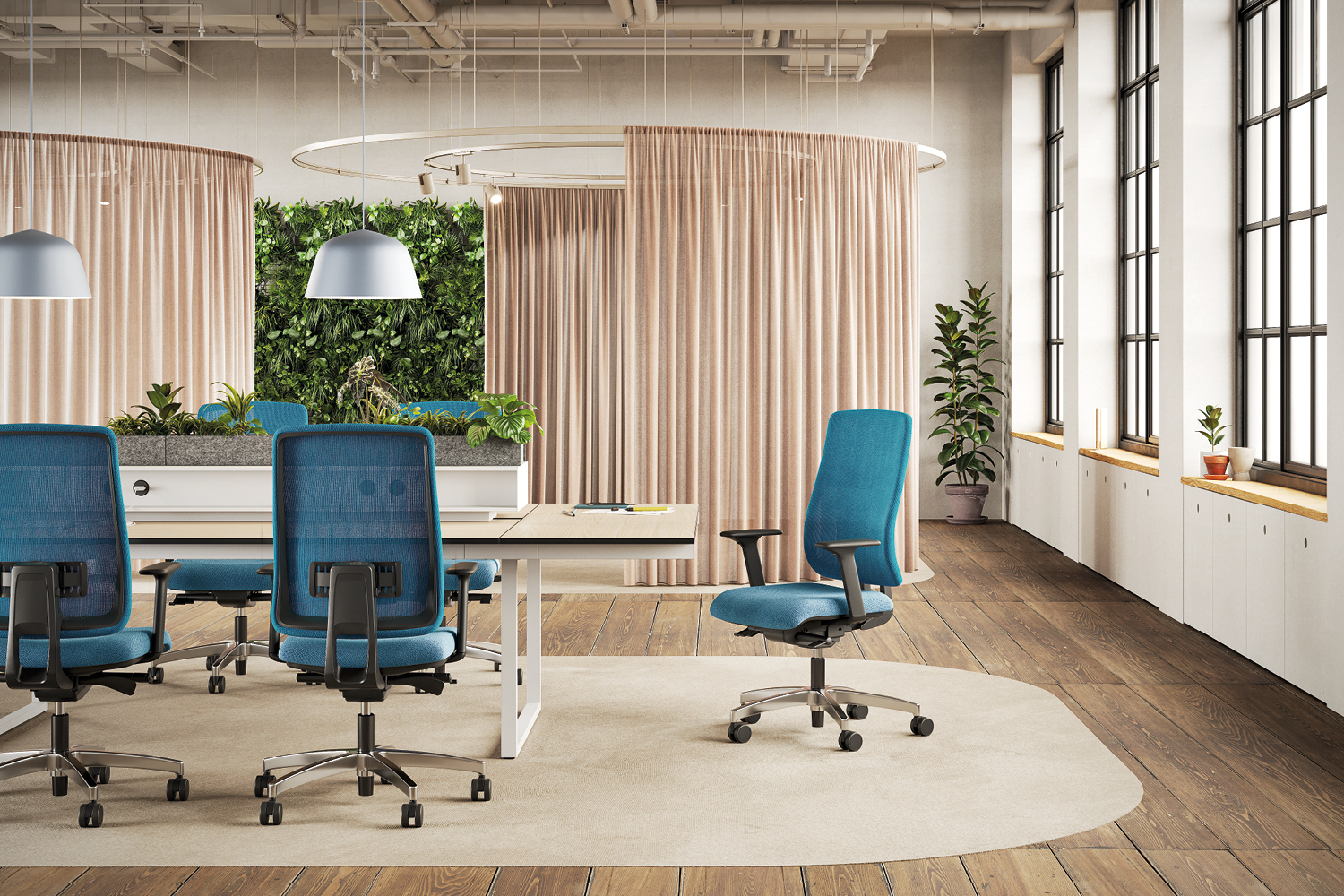Back pain, neck pain, migraines and carpal tunnel syndrome are just some of the consequences of poor posture while working. However, it’s the invisible problems that have to concern us the most, ranging from diseases that affect the blood circulation to those that target the musculoskeletal system.
Many of these problems can fortunately be avoided (or at least reduced) by making the best use of office chair adjustments, which are designed to ensure maximum ergonomics.
How to choose the right office chair
We’ve already talked about this topic in the past: when we speak of office chairs, there is no one-size-fits-all formula. You need to consider the type of work you do, how much time you spend sitting at your desk, whether or not you use a computer and many other factors.
Choosing an ergonomic office chair is already a huge step forward: by its very nature it encourages good posture, thereby reducing pressure on the spine.
Subsequently, it’s always advisable to opt for products with adjustable mechanisms, such as seat depth, lumbar support or armrests. The greater and more technological the devices, the wider the range of customisation: it’s a simple and effective equation.
An example of this is the new Denzel task chair from Frezza, with it’s ergonomic structure designed to always guarantee the best posture.

Frezza’s new Denzel chair is equipped with the innovative AMS (Active Motion System), whose flexibility allows for a high level of comfort. This mechanism allows the backrest to move simultaneously on two axes, thus being able to follow even the oblique movements of the user.
This technology, combined with the height and depth-adjustable lumbar support, allows the backrest to dynamically adapt to the body’s movements, providing an optimal seating experience. The result? A comfortable feeling of relaxed muscles and perfect posture over time.
The AMS system is a highly effective preventive solution to back problems and muscle fatigue, providing greater comfort not only while the person is sitting, but also when standing up. Thanks to this technology, the muscles of the spinal column continue to work even when seated, offering significant advantages in terms of mobility and relaxation even after work: once standing up, the back is less stiff and more elastic.
In addition to the Active Motion System, there are of course other devices, from the synchronised mechanism (which allows the seat and backrest to change inclination simultaneously) to the self-calibrated mechanism (which automatically adapts to the user’s weight without requiring any operation).
Both are available in the version with seat depth adjustment, as well as negative tilt for the synchronised mechanism device.
How to adjust a task chair for maximum comfort
Want some tips for sitting more comfortably at your desk? Here’s how to adjust the mechanisms of your chair:
- Seat height
Your feet should rest comfortably on the floor, so that your legs form a 90° angle and your knees are slightly lower than your hips. - Lumbar support
Installed in the backrest, it reproduces the curvature of the lumbar region. The height should be adjusted to suit your back, roughly around the lower end of your spine. - Seat depth
Lean comfortably against the backrest and, with your feet resting on the floor, assess the distance between your knees and the seat: if they are touching move the seat back, if not move it forward. This sliding mechanism works on the thigh support base, ensuring a comfortable position for people of different heights and builds. - Backrest tilting and tension adjustment
Tilting the backrest helps relieve pressure on the spine and widens the angle between the pelvis and back, thus balancing the tendency to ‘hunch over’ during the working day. A comfortable angle of adjustment is around 110°; the tension must then be set so that you can lean back more comfortably throughout the day to promote blood circulation. As mentioned earlier, some Denzel models are also equipped with Negative Tilt, which is a device that allows yout to tilt the seat forward. This adjustment further increases the angular opening between spine and pelvis. - Armrests
They should be positioned at elbow height to allow the shoulders and arms to relax at a 90° angle. At the same time, they should be as level as possible with the desk.
Looking for the perfect office chair? Discover all the ergonomic proposals from the Frezza catalogue.

